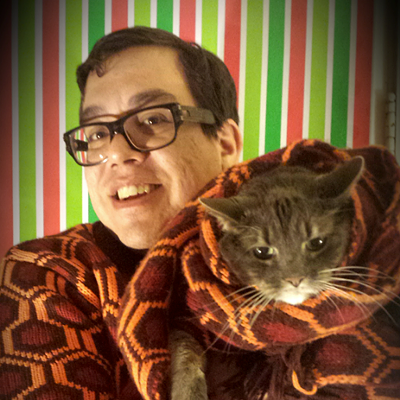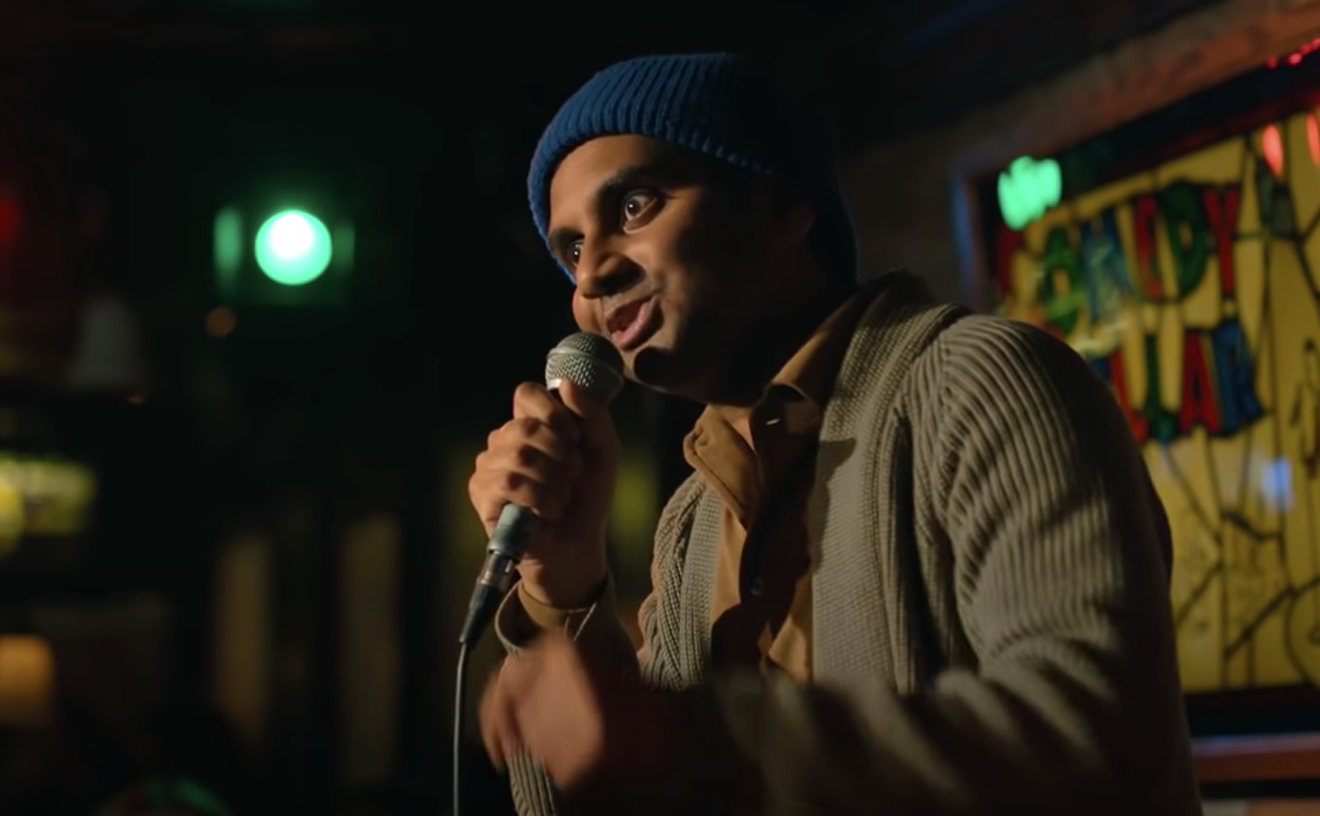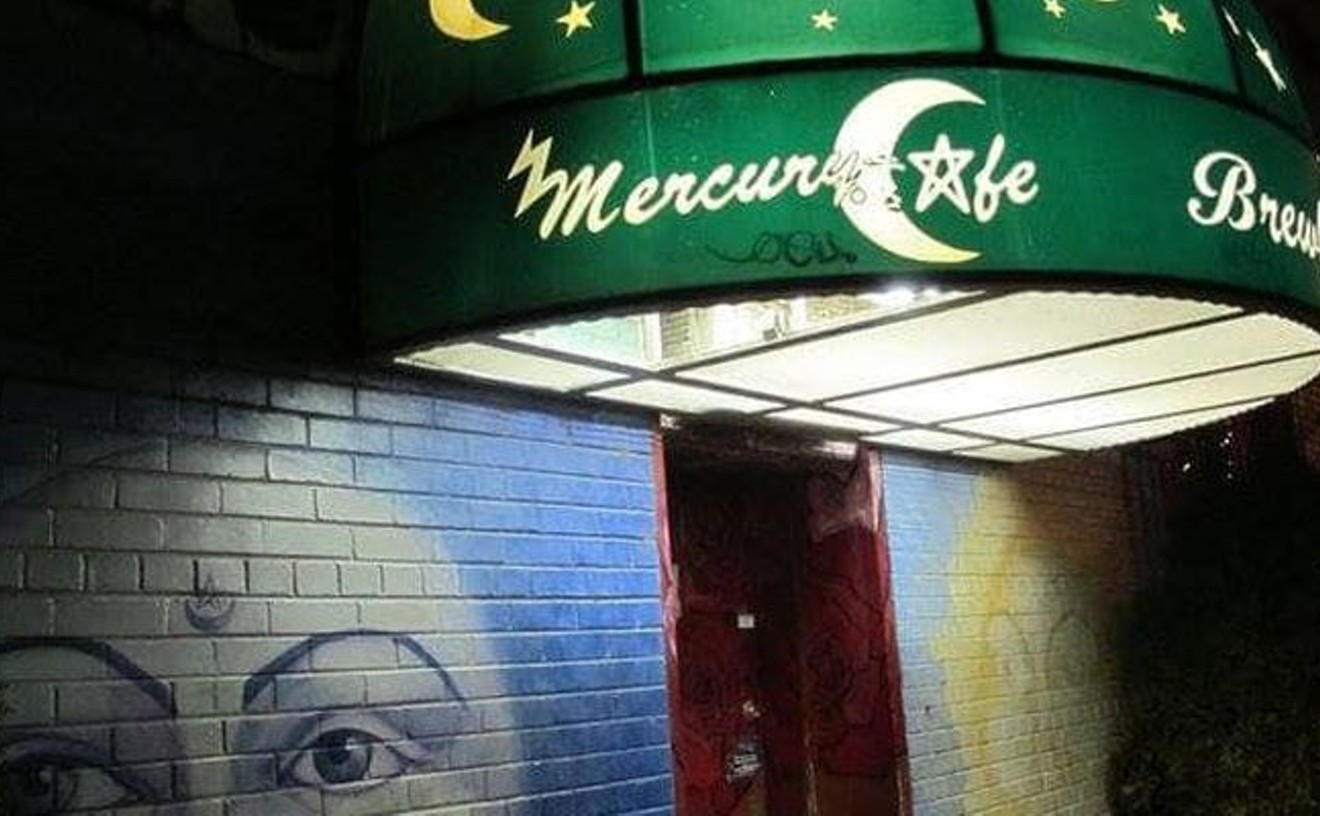I have a very clear memory of what I was doing on December 20, 1996. I was buying a ticket at the AMC Colorado Plaza 6 (now a terrifying 24 Hour Fitness) for Scream, the newest film from director Wes Craven, a man whose altar I worshipped at for years as a staunch horror fanatic. Having slowly watched the slasher-movie genre die a painful death over the previous decade, I was excited beyond measure for the flick; advance word said it would be a game-changer.
The screening was barely full, since it was just days before Christmas and this was not a holiday movie. I expected that, but after watching Craven and writer Kevin Williamson's chilling and smart tale — set in the small California town of Woodsboro, where a horror-movie-obsessed masked killer was stalking and killing a group of teens who'd grown up watching slasher-film greats — I was worried that no one was going to see this great film and that the antidote to horror's doldrums would dry up and disappear. But my fears were unwarranted, as that lovely gremlin we call "word of mouth" began to work its mischief.
The next week, I went to rewatch the film and found a sold-out screening full of appreciative horror fans gasping, cheering and, most important, screaming along to the original meta take on slasherdom. The film's attendance and box office went up nearly 50 percent in week two and even more in its unprecedented five-month run in theaters. By the time the blood dried, Scream had earned more than $1 million on a $14 million budget; it became became one of the biggest horror hits of all time.
After twenty years, the question is no longer, "What's your favorite scary movie?" Instead, it's this: "Have you actually seen this movie?"
Back when I was an active film programmer for the Denver Film Society, pushing films like drugs through my old Watching Hour series, I used to get mad at folks who hadn’t seen movies that I thought were unmissable. “What do you mean you’ve never seen Scream?!” I’d say, wishing I could pull a DVD out of my pocket and make them watch it right then and there.
My frustration was unwarranted for two reasons. First, it has taken me a while to understand how time works with movies. New generations need time to catch up on older films. And second, not everyone loves horror films or spent the majority of their childhood checking out every slasher film at the video store or on late-night cable, as I did.
Scream came at the desolate tail end of the slasher-movie boom, which, for the unschooled, was actually a very tiny window: from 1978 to 1984. During those years, studios churned out a huge pile of movies that audiences ate up (despite the fact that they only slightly resembled their smarter, scarier matriarchs, such as Psycho, Peeping Tom, Black Christmas, The Texas Chain Saw Massacre, Halloween, Friday the 13th). They all share certain similarities, including a group of potential victims/suspects; a dreadful anniversary; an isolated house or camping ground; a spooky-yet-memorable mask for the murderer; and a smart, de-sexualized young woman whose wits save her and take the killer down.
Surprisingly, slasher films' real roots come from the work of novelist Agatha Christie, who wrote such classics as And Then There Were None, Ten Little Indians and Murder on the Orient Express. Her books have multiple characters with great backstories, an isolated locale, a mysterious killer with a motive, and red herrings for audiences to follow until the real killer is revealed.
Christie’s formula eventually mixed with the boom of urban legends in the ’50s: cautionary tales, like the babysitter receiving phone calls from "inside the house" or the hook left on the car door while teens necked inside. Future filmmakers like Bob Clark and John Carpenter would build their sturdy slasher houses with those tools and materials.
About twelve years before Scream would steer the slasher into fresher waters, director Craven had already moved the direction of the genre with his important A Nightmare on Elm Street, which tweaked the already trite (trite as of 1984, that is) slasher setup by pitting his lineup of potential dead teenagers against a bogeyman who went after them in their dreams. Craven presented one of the most iconic killers, the razor-gloved Freddy Krueger, and one of the most effective final girls, Nancy Thompson. ANOES was a huge hit and began a string of supernatural slasher copycats that took Craven’s original gift and ran it into the ground. A whole franchise of five Nightmare sequels, sans Craven, effectively killed Krueger until the filmmaker decided to come back to his creation and breathe new life into it with a tasty meta twist.
New Nightmare in 1994 cast original Nightmare on Elm Street actors Robert Englund and Heather Langenkamp as themselves. Living in a post-Nightmare on Elm Street Hollywood, Englund and Langenkamp begin to experience bizarre dreams tinged by Freddy when Craven, who also plays himself in the film, begins writing a new sequel that blurs the line between film and reality. Langenkamp plays Nancy in a bid to effectively close out the Nightmare on Elm Street saga forever (at least until 2010's ill-advised remake).
While Craven was winding that series down, a thirty-year-old screenwriter named Kevin Williamson emerged from the woods of North Carolina with a hot new screenplay, then titled Scary Movie. His meta slasher movie took the entirety of the slasher genre, which by 1995 had had its bones picked clean, and tackled its dearth of originality by introducing us to a group of young players who’ve seen all of the horror movies that the killer, clad in a costume that nods at Edvard Munch’s “Scream” painting, has seen. The screenplay used the cliché tropes that usually befall a horror film’s victims — investigating weird sounds, going upstairs instead of going out the door, drinking and having sex — to trap the teens, who do their best to survive until the credits roll.
Craven came in to direct the script with the eye of a master whose own self-awareness of the clichés was sharpened and focused. He brought in a pool of hot young talent, including Matthew Lillard, Skeet Ulrich, David Arquette, Courteney Cox, Rose McGowan and Neve Campbell, who would embody the final girl for a new generation of horror fans.
The film's tongue-in-cheek approach to the drop-dead seriousness of murder is best personified in one of the Scream MVPs: actor Jamie Kennedy as Randy, a sassy video-store clerk whose knowledge of horror films forces the group to see the warning signs of their own impending death that past films, like Prom Night and The Town That Dreaded Sundown, have laid down for them.
Craven and Williamson created one giant love letter to the horror-film genre with smart, playful nods to the origins of the slasher. But the film tweaked and improved clichés and stereotypes. Girls are just as smart as guys in the story, fighting back rather than cowering in fear, and they are no longer punished for exploring their sexuality.
The film remains fresh down to its reveal of the diabolical killer and its decision to give its final girl some pals to walk off into the sunrise with rather than having to lick her wounds alone. Scream was so effective that it revitalized the slasher genre for a brief while, inspiring such entries as Urban Legend, Cherry Falls, Final Destination, Valentine and the Williamson-penned I Know What You Did Last Summer. The genre quickly collapsed on itself again, save for three decent sequels (Scream 4 became Craven’s final directorial effort before his death in 2015).
During my last month as creative manager for the Denver Alamo Drafthouse in 2013, I had the pleasure of programming a night of classic horror films for Halloween. We kept the film titles a secret from the audience until the credits started to roll, and because of some unforeseen issues, I had to swap out a film at the last minute. I decided to tag in Scream.
Though always a top-tier horror film in my book, I worried that the sold-out audience would be annoyed at the selection, perhaps having seen it one too many times. My fears were dashed as soon as the film started. The sound of a ringing phone gave way to Drew Barrymore’s storied appearance on screen as a stranger flirts with her and asks that classic question, “What’s your favorite scary movie?” Half the audience cheered and clapped, while the other half, I later learned, was seeing Scream for the first time. From their reactions, it quickly became clear that Scream will continue to stalk around for years to come, scaring and affecting audiences and becoming the answer to the ghost-faced killer’s iconic creepy question: "What's your favorite scary movie?"
Scream is available to watch today via AmazonPrime, iTunes and GooglePlay.
Bonus for film conspiracy nuts: Check out the short film Copycat, which explores the fascinating story of the 1991 film There’s Nothing Out There, a hilarious and remarkable meta horror film from Rolfe Kanefsky about a group of teens headed to the woods who seem to ignore all of the standard horror-film warning signs doled out by their sassy, experienced film-geek pal (actor Craig Peck, seemingly doing an early Jerry Seinfeld impression), only to find themselves in their own scary movie. Some say that Craven and Williamson stole the idea, while others, myself included, feel that it’s a great genre entry that may have “inspired” the postmodern world of New Nightmare and Scream. Watch There’s Nothing Out There on YouTube and judge for yourself.
[
{
"name": "Air - MediumRectangle - Inline Content - Mobile Display Size",
"component": "12017618",
"insertPoint": "2",
"requiredCountToDisplay": "2"
},{
"name": "Editor Picks",
"component": "17242653",
"insertPoint": "4",
"requiredCountToDisplay": "1"
},{
"name": "Inline Links",
"component": "18838239",
"insertPoint": "8th",
"startingPoint": 8,
"requiredCountToDisplay": "7",
"maxInsertions": 25
},{
"name": "Air - MediumRectangle - Combo - Inline Content",
"component": "17261320",
"insertPoint": "8th",
"startingPoint": 8,
"requiredCountToDisplay": "7",
"maxInsertions": 25
},{
"name": "Inline Links",
"component": "18838239",
"insertPoint": "8th",
"startingPoint": 12,
"requiredCountToDisplay": "11",
"maxInsertions": 25
},{
"name": "Air - Leaderboard Tower - Combo - Inline Content",
"component": "17261321",
"insertPoint": "8th",
"startingPoint": 12,
"requiredCountToDisplay": "11",
"maxInsertions": 25
}
]











